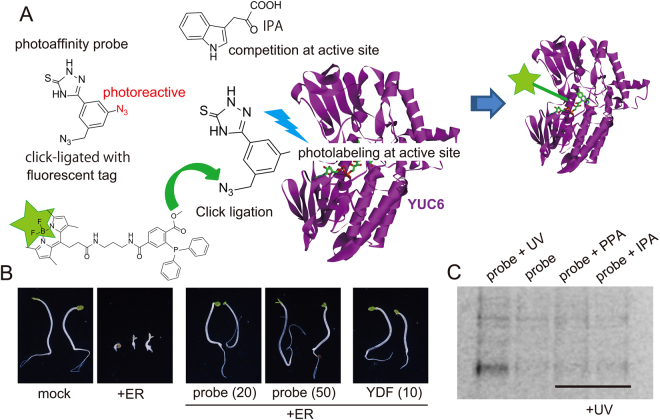Figure 9.
Photoaffinity labeling experiments of YUC6 by the bifunctional photoreactive yucasin probe. (A) Diagram of photoaffinity labeling experiment by the bifunctional photoreactive yucasin probe. The photoreactive aryl azido group (red) conjugates with YUC6 recombinant protein. After photoaffinity labeling, the alkyl azido group can ligate to the fluorescent phosphine tag in accordance with the Staudinger–Bertozzi reaction. YUC6 was fluorescently tagged by the conjugation with the probe. If the probe competes with the substrate phenylpyruvic acid (PPA) or indole-3-pyruvic acid (IPA) at active site, fluorescently tagged YUC6 cannot be detected. (B) Effects of the probe on high-auxin phenotype of pMDC7::YUC6 etiolated seedlings. The etiolated seedlings were grown in 1/2 MS medium in the presence of inhibitors and 10 µM ER in the dark for 3 days. (C) Fluorescent gel image of SDS-PAGE under 488-nm excitation and 520-nm emission wavelengths. YUC6 was irradiated by UV in the presence of 20 µM probe (1st lane from left), YUC6 was not irradiated in the presence of 20 µM probe (2nd lane), YUC6 was irradiated by UV in the presence of 20 µM probe and 200 µM PPA (3rd lane), and YUC6 was irradiated by UV in the presence of 20 µM probe and 200 µM IPA (4th lane).

